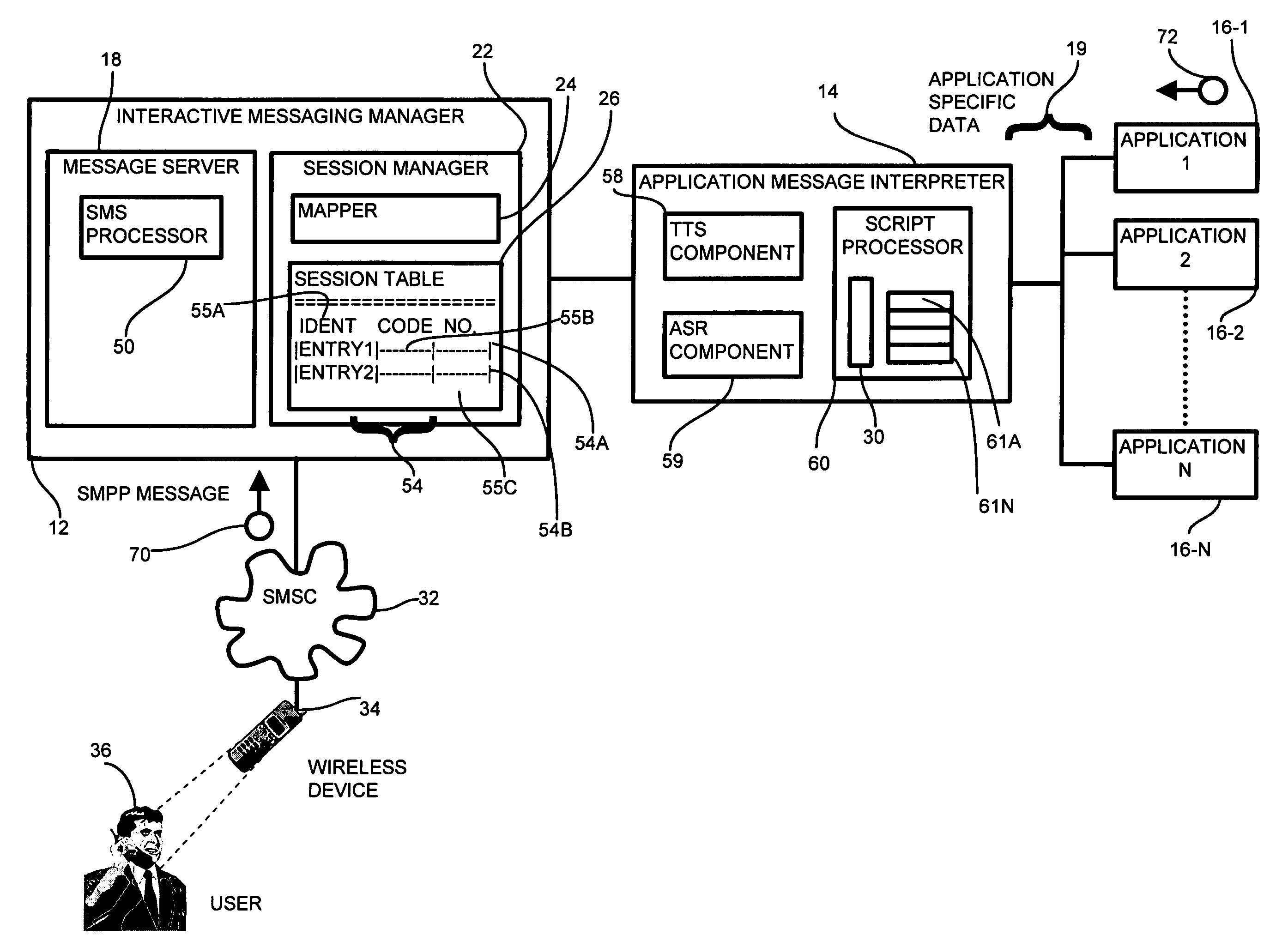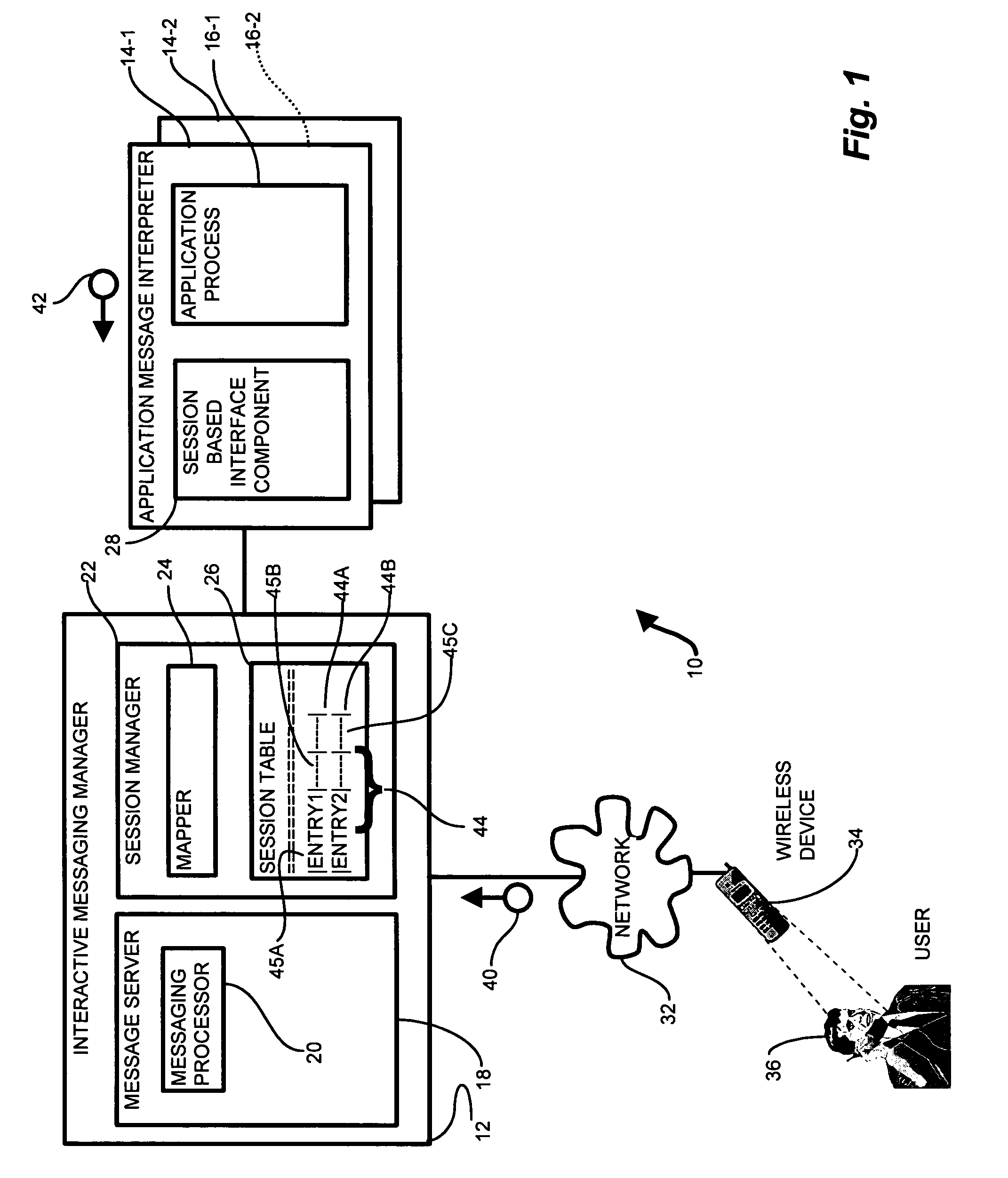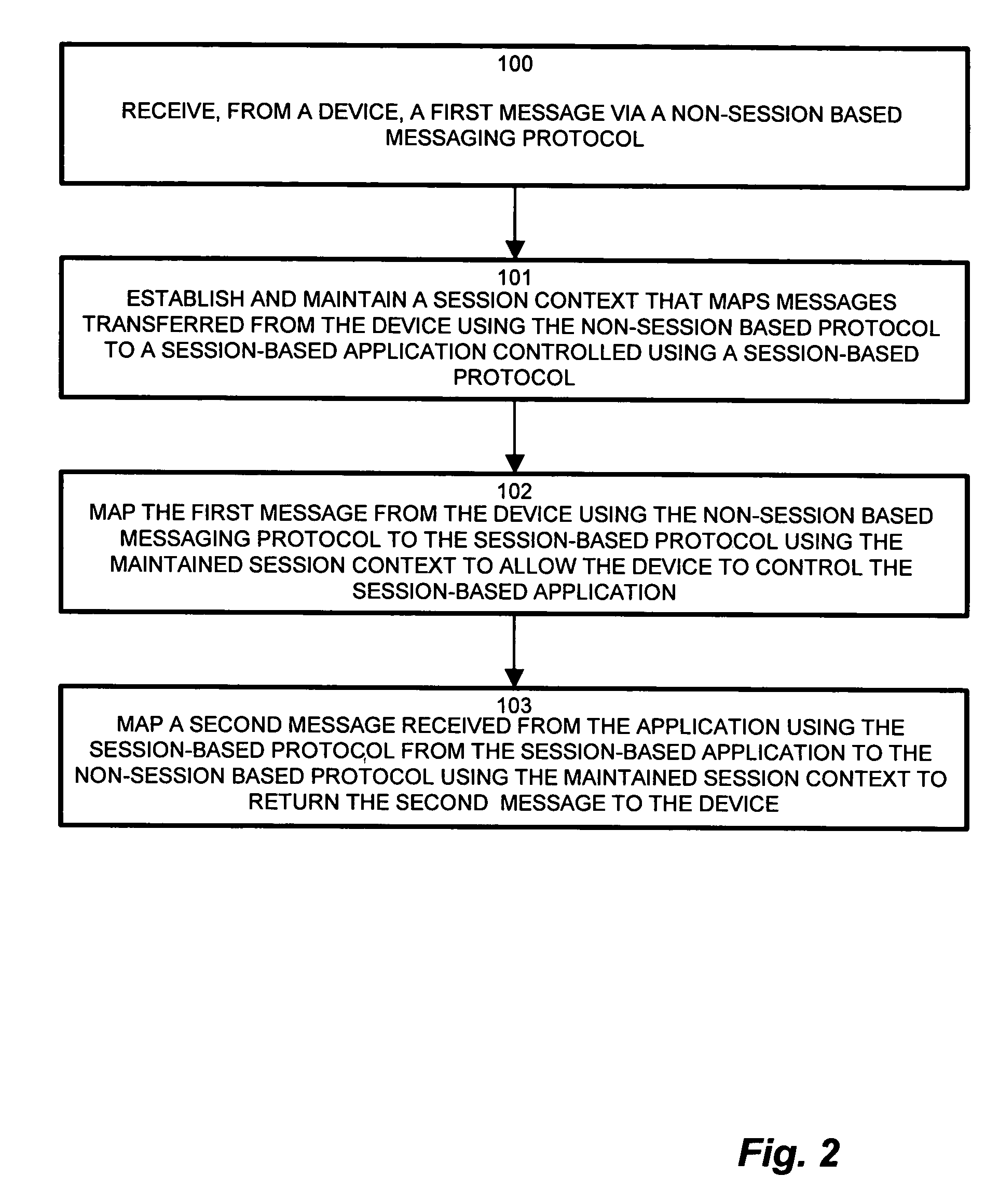System and methods for controlling an application
a technology of system and method, applied in the field of system and method for controlling an application, can solve the problems of no connection mechanism for ensuring the arrival sequence, and burden on both the user and the application, and achieve the effect of overcomplicating the complexity of a command-based interfa
- Summary
- Abstract
- Description
- Claims
- Application Information
AI Technical Summary
Benefits of technology
Problems solved by technology
Method used
Image
Examples
Embodiment Construction
[0042]The present invention substantially overcomes particular shortcomings of the above described conventional methods of conventional voice-driven communication threads which rely on a dedicated communication line (connection) to maintain a session context between a user and an application for the duration of a session. In such a conventional arrangement, a user initiates a call to a particular application, and the application receives the call on a corresponding incoming line. Since the line remains open and dedicated to communications between the user and the application, the application refers to the identification of the dedicated line, typically via a port ID, to maintain a context environment for successive exchanges, or messages, within a session sequence (session). The session based nature of the dedicated voice connection, therefore, provides the context information for the exchange of messages included in a particular session defined by the exchange of request and respon...
PUM
 Login to View More
Login to View More Abstract
Description
Claims
Application Information
 Login to View More
Login to View More - R&D
- Intellectual Property
- Life Sciences
- Materials
- Tech Scout
- Unparalleled Data Quality
- Higher Quality Content
- 60% Fewer Hallucinations
Browse by: Latest US Patents, China's latest patents, Technical Efficacy Thesaurus, Application Domain, Technology Topic, Popular Technical Reports.
© 2025 PatSnap. All rights reserved.Legal|Privacy policy|Modern Slavery Act Transparency Statement|Sitemap|About US| Contact US: help@patsnap.com



